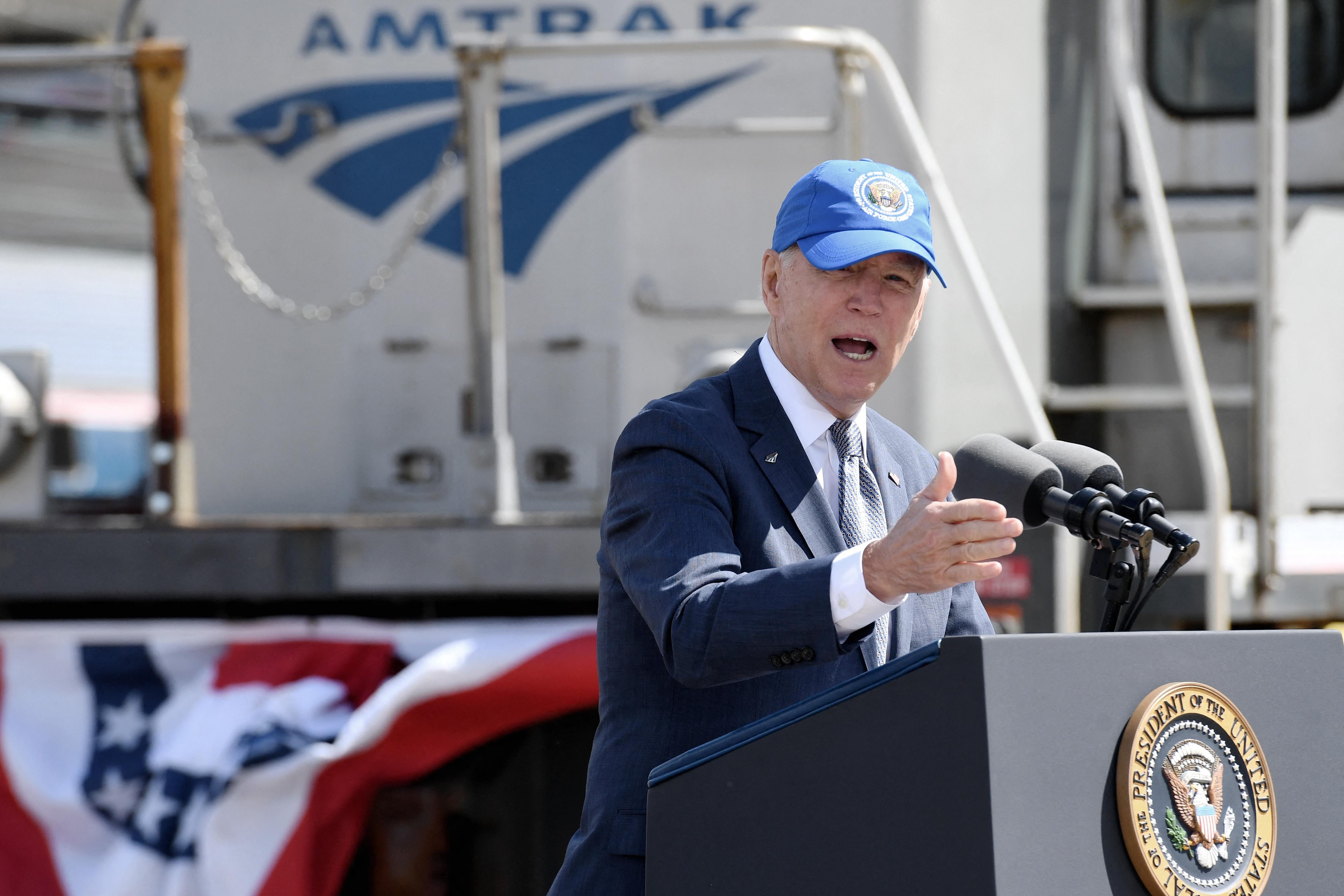Amtrak Joe delivers.
The bipartisan infrastructure bill that seems likely to pass the Senate contains $66 billion for intercity rail, which is pretty damn close to the $80 billion President Joe Biden asked for in April. The White House calls it “the largest investment in passenger rail since the creation of Amtrak 50 years ago.”
The deal includes $22 billion in “grants” for Amtrak, another $24 billion specifically for the Northeast Corridor, and another $20 billion for intercity service, safety grants, and grade crossing improvements. (What’s the difference between the first chunk of grants and the last? The White House hasn’t detailed that yet.)
That will mean better Amtrak service on existing high-traffic routes (relatively speaking) like Portland–Seattle, Richmond–D.C., and Chicago–Milwaukee. It might mean new service in fast-growing regions, like between Charlotte and Atlanta or Atlanta and Nashville.
Hopefully it will not mean big investments in intercity rail between Wichita and Oklahoma City or Cheyenne and Pueblo, to pick two “new routes” identified on a wish list map Amtrak released this spring. (Sorry—it’s not a priority.)
The biggest-ticket item is, as it should be, money for the route that not only delivers the best service and takes in the most revenue but also has the most potential: the Northeast Corridor. The string of cities between Washington and Boston is the densest part of the country. It’s home to one in five U.S. jobs, and its economy would be the fifth largest in the world on its own.
This is why it is home to the country’s best-performing Amtrak route—but also why it deserves better. The Northeast version of “high-speed rail” is both less fast and more expensive than international peers, and judging by the region’s crammed highways, busy intercity bus services, and short-haul airplane shuttles, there’s a lot of room for improvement.
We can presume the $24 billion for the Northeast Corridor contains money for the decrepit Baltimore & Potomac Tunnel in Maryland, which has been labeled the route’s greatest bottleneck. And it probably gives a final green light to build a second tunnel under the Hudson River to Manhattan, which has been a top regional priority for two decades—but gained new urgency when Superstorm Sandy flooded the existing tunnel with corrosive saltwater. That tunnel is part of the Gateway Project, which also includes a series of bridges in New Jersey. “If you put all of that together this bill funds Gateway. Full stop,” New Jersey Democrat Tom Malinowski, who serves on the House Transportation Committee, told NJ.com.
That’s great. But for north of $24 billion, the Northeast Corridor should be getting real high-speed rail service—not a series of piecemeal upgrades that shave minutes off of trip times. An investment of this size ought to put a dent in the Boston-to-Washington air travel market.
Instead, $24 billion barely covers the expected cost of the Gateway program ($22 billion), and that’s before you even count the $11 billion Amtrak wants to expand Penn Station in New York.
Does that seem like funny money to you? You’re not alone. Many people have noticed that American transit projects are out-of-this-world expensive, from California high-speed rail to the Second Avenue Subway. Few people have dedicated more time and study to this subject than Alon Levy, who along with Eric Goldwyn is leading the Transit Costs Project at New York University to figure out what has gone wrong. Nearly a decade ago, Levy outlined some ways that Amtrak could achieve Japan-grade high-speed rail for one-tenth the $150 billion price tag that Amtrak has outlined.
But Amtrak does not care about how much this stuff costs. How do I know this with such certainty? Because I asked Amtrak CEO William Flynn about it in March. In particular, I wanted to know how he justified the $11.6 billion price tag on the new Hudson River tunnel project—which comes out, according to the Transit Costs Project, at almost $3 billion per mile of tunnel. Flynn said he just didn’t think it was that expensive.
In reality, it will be the most expensive train tunnel ever built aside from two other New York City projects, each of which at least includes some stations. It will cost twice as much per mile as London’s Crossrail, five times as much as the Paris extension of Line 1, and so on. And those projects have stations!
The cynical counterargument is that advocates should stop worrying about this stuff, since scrutiny of transit capital projects is not matched by any scruples from highway builders. Taking Amtrak to task amounts to unilateral disarmament, in this view, and will only perpetuate the status quo in which highways are funded and transit gets pegged as wasteful.
So that’s why I’m proposing an ingenious compromise: Amtrak should stay the course until Congress writes the check. But then it should bring in some experts from Japan, France, Spain, or China. If Amtrak could spend that $66 billion like literally any other country in the world, we could end up with train service that looks a lot more like the Shinkansen or the TGV.* And that, in turn, would mean a real passenger-rail legacy for Joe Biden.
Correction, July 30, 2021: This piece originally misspelled Shinkansen.
